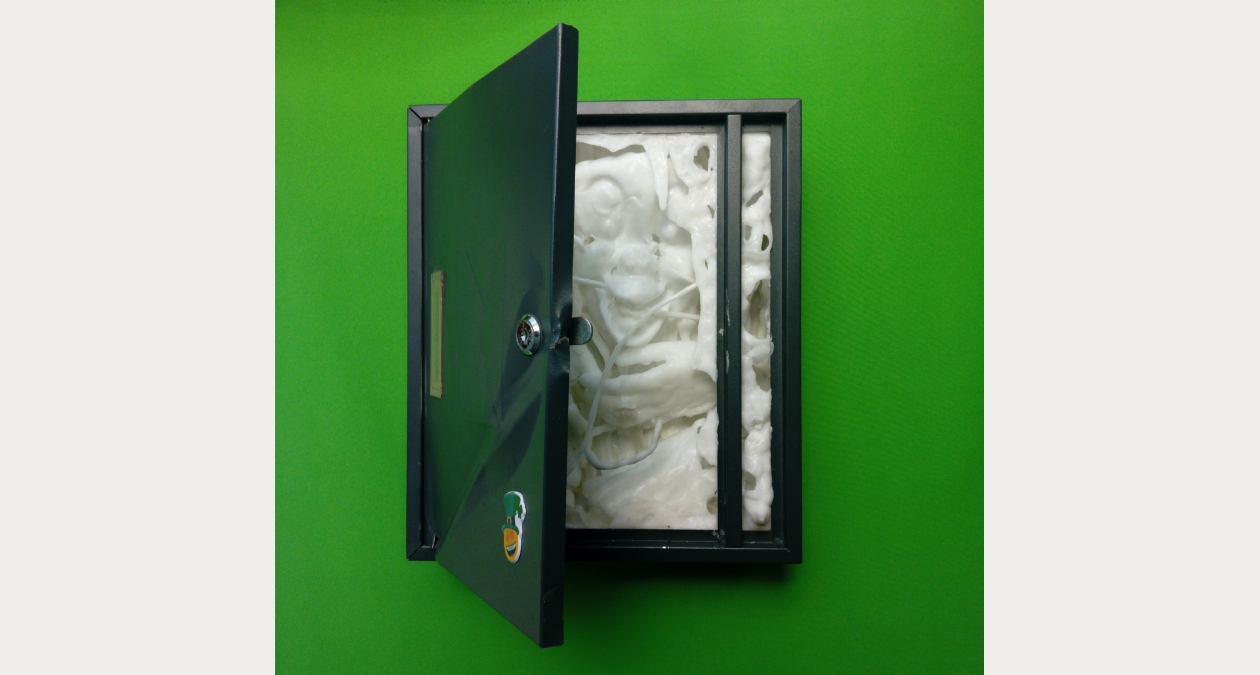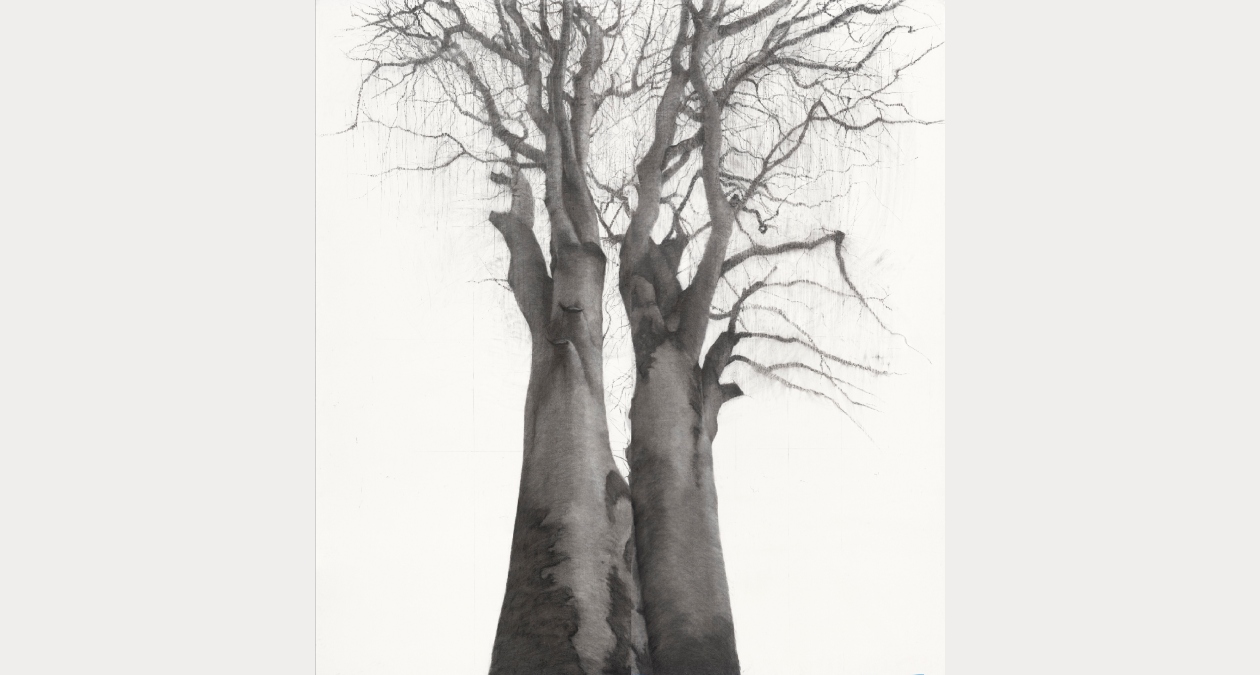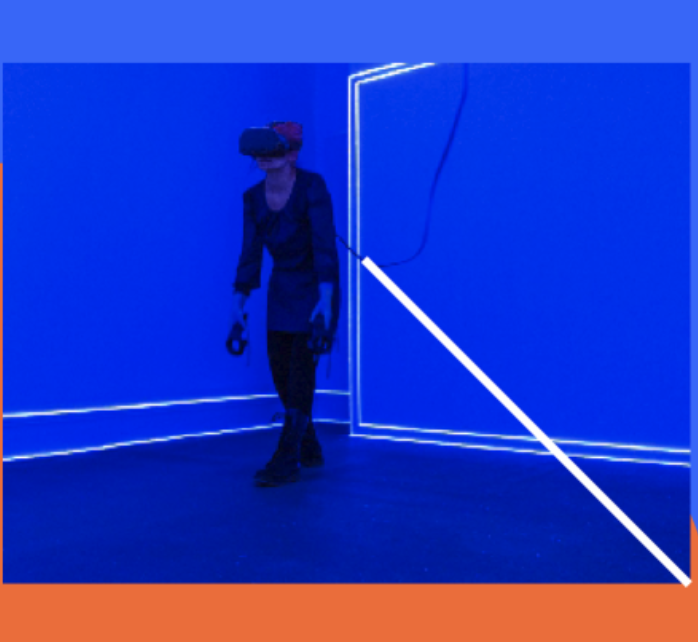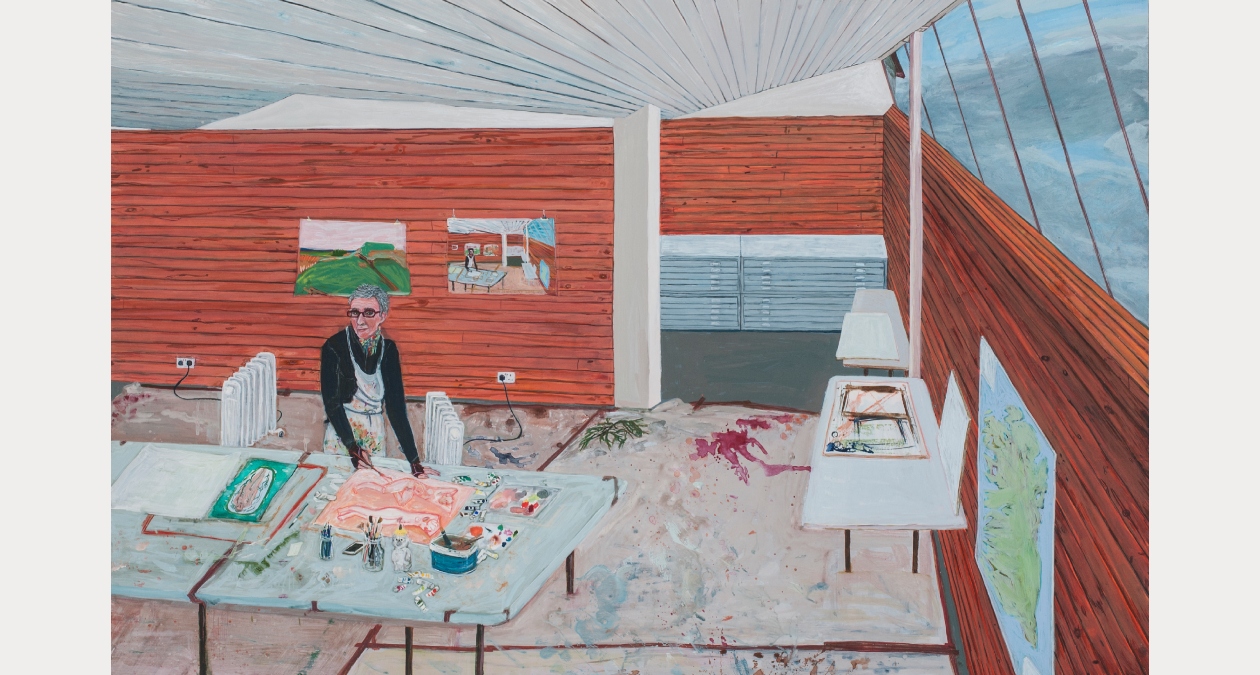Artist Statements
Richard Forrest, working across sculpture, new media and installation, Forrest’s practice is characterised by a spirit of experimentation into phenomenology, analysing human perception and technology’s role in altering our perceptual and cognitive experiences. Forrest seeks to expand our understanding of objects in an age of virtual acceleration, by exploring our learned and visual understanding of form, material and space. He counterpoints tangible materials with virtual 3D graphic software such as Blender, to construct installations that question simulacrum and authenticity. His research is heavily influenced by contemporary notions of representation. These influences range from John Carmack, a Texas based games programmer, aerospace and virtual reality engineer, to podcast channels such as Radiolab.
The roots of his works exhibited here lie with the ancient Greek philosophers and mathematicians who sought out truth, and looked for it within the rules and logic of language. The work takes logic as its point of departure – its journey as a shape-shifting entity from ancient Greece into the computer languages we use today.
Kevin Gaffney’s work explores the construction, projection and manipulation of identity. The scripts Gaffney writes are narrated or spoken as dialogue in the films, aiming to reveal the psychological landscapes that the characters inhabit. Characters appear in a multiplicity of realities, interspersed between locations, purpose-built sets and intimately staged portraits. The characters act as vehicles to reveal subconscious desires and create disruptions within the parameters of the image’s constructed cinematic order. Their appearance and performance often morphs and adapts as the films progress, mirroring the transitory nature of self-hood.
Exhibited at the RHA, A Numbness in the Mouth, 17m 32s, Irish with english subtitles, 2016, takes place in an Ireland of the near future; a self-sustaining, militarized island where climate change has benefited agricultural production. A spokesperson for the government’s Ministry of Food, Gráinne- speaking in the Irish language, informs us that rations are being enforced. Due to a record crop yield of wheat there is a surplus of flour on the market. To retain economic balance between supply and demand, each citizen is requested to consume more than five pounds of flour per day. Shackleton’s Mill in Strawberry Beds, Dublin, provides the context for the film’s two protagonists to explore the role of women in the mill, alongside our relationship to food and its production in a series of staged scenes, monologues and analogies.
Ann Maria Healy. In literature there is an ongoing debate about the possibility that only seven narratives exist in the world and that all narratives can be traced back to these seven. Similarly, Aby Warburg suggested through his mapping in Mnemosyne that powerful symbolic images reoccur throughout history. Healy’s practice is concerned with re-occurrence, mimesis, the power of history and narratives deeply embedded within the human psyche. Taking established tropes; she reworks them into alternative narratives, seeking potential methods of togetherness outside of the contemporary hegemonic modes of social being. Issues of gender and representation within popular culture are important reference points within her practice.
Seeking to co-opt the embodied meaning of material in order to unpack and subvert this meaning. Healy uses easily available and recognisable materials with the desire to develop a visual lexicon that is open and accessible. Drawn to narrative that is connected to place and object, often acting in an absurd manner the work seeks to employ mysticism as a tool to problematize understanding.
How to be Other than a body is a fictional ethnography of an imagined people. The work manifests as a variable installation of objects. One of the central elements of the work is a Holy Well that is made from household items such as attic water tanks and a paddling pool plumbed together to create a functioning water feature that mimics the role of the traditional holy well. Holy Wells in Ireland are very common within the landscape and the Irish people have a deep connection to them. Initially known to have been used as sites of pagan ritual and then co opted by the catholic church, each well is associated with a different saint and has a specific condition that drinking the water can cure. Groups of people have gathered at these sites to pray in various guises over the centuries and most are adorned with a myriad of talismans.
The well that is central to the group of people that are being imagined has been born out of an alternative landscape and has been cobbled together using detritus of the domestic. It has been vandalized with writing in the same manner that public toilet doors are vandalized. The water that flows through this well contains traces of the chemicals mifepristone and misoprostol, which are known to be the chemicals that are used to bring about abortion. It is suggested through an ethnographic video which is attempting to understand these people, that this was the ‘cure’ that the holy well provided. The video work, which acts as a framework to understand the objects that we find before us in the gallery, is set in a computer generated post apocalyptic landscape. It is an empty city where nothing can be found except these objects, performing themselves in various manners. A voice over dialogue gives us fragments of information of how these people might have existed.
Elaine Hoey “The true essence of VR lies not in the technology but in art” and “rather than to, escape or entertain, the ultimate promise of VR, maybe to transform, and redeem our awareness of reality” (Heim, 1993)
Elaine Hoey works mainly creating interactive based installations, appropriating gaming industry aesthetic and techniques, such as virtual reality, motion capture, 3d virtual avatars and environments. Hoey’s work focuses on the intersection between media, technology and politics. As we become increasingly digitally dependent, her work reminds us of the political stakes not only of the pictures our media show us, but in the way our eyes, ears and bodies encounter them. Utilising virtual reality technology she investigates immersing the viewer in performative and often uncomfortable roles within her digitally constructed worlds exploring the potential of mediated presence as an experience capable of challenging perceptions of the virtual and the real.
The Weight of Water, 2016 is an interactive virtual reality installation which appropriates gaming technology to explore the current refugee crisis. The work places the viewer in a central role, as both performer and witness in this 360 ̊ immersive narrative. Words and sound create an abstract visual landscape as the viewer navigates a difficult boat journey made by refugees as Europe begins to close its borders to those seeking asylum.
Ali Kirby creates sculptural assemblages and installations that physically respond to the built environment. Ordinary construction materials are re-purposed to create seemingly robust structures that reveal their fragility upon inspection. Concrete, plaster, soap and textiles often sit side by side in these sculptural arrangements that position themselves somewhere between interior and exterior space. Her approach to materials and colour is intuitive, often employing a muted palette, soft textures and hard edges to create the various surfaces and forms normally associated with architecture. These soft-edged fabrics and forms butt up against concrete or wood in an attempt to draw our attention to the relationships between materials, how they connect, support, become damaged or distressed and ultimately reveal their potential for transformation.
In the site specific installation, Landing, 2017, fragments of an outmoded architectural feature are replicated to scale in their original position, but removed of any sort of function, rendering them merely a series of minimal forms that behave like sculptures. Their large scale, almost brutal presence, tempered by a muted palette, will alter the physical space of the gallery and interrupt the viewer’s path within it.
Jane Locke is an artist, scientist and independent researcher whose practice is predominantly expressed through drawing and performative talks. Her work often finds itself wondering at the role of institutions in the creation of truth, the dissemination of knowledge and the awarding of credibility. Her most recent projects include commissions for; a series of illustrated guided tours of the Botanic Gardens Glasnevin, with an accompanying guidebook A Fascinating Guide to the Botanic Gardens Glasnevin, 2016 and a project for Dublin City Council’s 1916 commemoration program Tales from a Green Post Box, 2016 culminating in a gallery-based show at The LAB, Foley Street, Dublin.
Intrigued by the central role the GPO has played in the historiography of the rising in 1916, much of the research for this project has centered on the extraordinary reach and influence of the postal system at the time. So influential, that only thirty-seven days after the formation of the provisional government in 1922, one of the first political acts was to issue an order to paint the nation’s post boxes emerald green. Over the course of the research Locke has discovered tantalizing glimpses of forgotten technologies that appear to have perished with the destruction of the GPO in 1916 but perhaps provide an insight into why, after standing on street corners for over 100 years, our cast iron post boxes have started to disappear from our streets.
Tales from a Green Post Box consists of a large-scale chalk drawing on the gallery wall, trees which have spilled out from the drawing, and a table at which the viewer may sit and peruse the associated research notebook. A series of entertaining talks will provide illumination on the history of the postal system in Ireland.
As part of her participation in Futures, Series 3, Episode 1, Jane Locke will give three performative lectures: Wed 22 March – 6pm, Saturday 25 March – 1pm and 3pm. For further information and booking, please BOOK HERE
Jane Raineys’ paintings often describe no specific events, with the beginning, the end and the transgressive or progressive middle, often folding in on each other. They are always in a state of flux, living somewhere in-between representation and abstraction, depicting things that are of this world but also not of this world. Tangible things that you can almost touch collide with unrecognisable abstract marks that are very much involved and about the act of painting. The worlds are suspended in time, often with no sense of gravity, living within a liminal space that is neither here nor there. Bright in colour they pulsate against each other causing harmonious connections as well as uneasy clashes. A sense of overwhelming uneasy and awkwardness occupy the paintings, alluding that all is not what it seems.
Raineys’ paintings, shown in Futures, all take the landscape as a departure point. They work with and manipulate paintings language and physical qualities, to create strange other worldly painted environments. Delving into and pulling apart themes of boundaries, borders, nature, alternate universes and duality, the works draw on inspiration from a large number of sources, from literature and stories about adventure and travel to classical painters depictions of the outdoors and exploration. Relying on a series of opposites, thin glazes are often contrasted with luscious thick globular paint, abstracted marks are juxtaposed with representational rendered images of landscapes and things beyond recognition, a gradient of paint can be read as a sky, a blob of paint a rock or a vortex into another world, making them in turn worlds that can only be described through paint.
Image: Richard Forrest, Construct, 2015, Mural 2743 x 2530cm, Facebook HQ, Photography Lucy McKenna, Image courtesy of the artist.



